A Monster’s Expedition is a charming little puzzle game about pushing logs.
No, really. “Pushing logs” is the single interaction with the game world that Monster’s Expedition offers you, and it’s astonishing how much potential it manages to squeeze out of that one basic concept. You are a bipedal blob-monster with a backpack who hops off a ferry to explore a vast archipelago of hundreds of tiny islands. Each island has one or more trees on it, which when pushed over become logs. Your task is to further push these logs in such a way that they form a bridge, pathway or other route to the next island along; you cross the bridge to that island, and then you get to do the whole thing all over again. And again. And again. Do it six hundred times and you’ll eventually be able to hop back on a return ferry and “finish” A Monster’s Expedition. That’s it. That’s the entire game.
This is one reason why I think of A Monster’s Expedition as a game designer’s game. Its gameplay consists of a single intentionally, brutally simple concept, and it’s like the developers set themselves a challenge to see just how far they could push that concept before they got bored of designing levels around it. The number of different ways they come up with to push logs, and the number of different outcomes you can get from pushing logs, really has to be seen to be believed. If, before starting A Monster’s Expedition, you had told me this is a game with nine hundred levels about pushing logs (there’s three hundred optional ones off the critical path) I would have seriously questioned the sanity of that statement because surely no single game mechanic can survive that amount of repetition. After having finished it, though, it makes almost perfect sense, both because of the game’s unusual open world structure and because of the sheer variety of log-pushing methods on display here. You push logs into logs. You push logs onto logs. You push logs over logs. Just when you think there’s no way that they can come up with something new, that this time, surely, their little log-pushing wheeze has to come to a natural conclusion, A Monster’s Expedition finds a new way of surprising you — and it’s a pleasant kind of surprise, the sort that elicits a delighted “Ah!” or a quick snort of laughter as a new kind of interaction between logs and the pushing of them suddenly snaps into focus after ten minutes of experimentation.
Even at its most basic, though, the log-pushing mechanic has a lot going for it. Pushing a tree over creates a log lying lengthways on the opposite side of the tree, along with a tree stump. The tree stump lets you hop on top of it and then onto the top of the log, which is useful for some islands where you need to use it as a ramp or a bridge, but you can’t push the log from the stump side and you cannot move the log while stood on top of it. The only way to move it is to push it on either of its long sides, or else push it on the far end back towards the stump where it will become upright again as if you never moved it. Pushing it on one of the sides will set it rolling in that direction until it either hits something in the way – a rock, a tree stump, another log — or it plops into the water, where you can no longer interact with it. The orientation of the log is very important; if there’s a gap of one square of water separating you from the next island, then you need to position the log so that it falls lengthways across the channel so that you can run from one end to the other and reach your goal. Rolling it in sideways is no good, as the log will float in the middle of the square surrounded by water and as your monster-avatar appears to be intensely hydrophobic it’ll adamantly refuse to step onto the log if there’s the slightest chance it’ll get wet.
The problem with this initial tree-felling setup is that it’s physically impossible to push the log lengthways from its starting position – one end is blocked by the tree stump, and pushing it from the other end simply moves it back up into the position it was before you knocked the tree down in the first place. In order to properly manipulate it you need to roll it sideways into a position where it doesn’t fall into the water and there’s a free space at both ends, one for you to push it from, and the other for you to push it into. In order to do that you need a blocking object of some kind to halt its sideways movement. The simplest islands will have a single rock conveniently placed to do just that, making the solution very obvious, but the complexity slowly ratchets up from there: you’ll have to navigate multiple rocks, or move two logs around in sequence without them getting in each other’s way, or arrange one log so that it blocks another log’s rolling movement without being knocked into the water itself. Despite what I said earlier you can cross a square of water if you push a log into it sideways; you just need to push a second log in after it, which will cause both logs to automatically tie themselves together into a square raft-like structure that fully covers the water and which your monster can safely cross. Sometimes you need to push secondary logs into the water to provide yourself with somewhere to stand so that you can push the log you’re going to use as the bridge. Sometimes you need to use two logs to make a raft, stand on the raft, and then push off against some solid object to propel you and the raft in the opposite direction until it hits dry land once more.
And the thing that makes A Monster’s Expedition such a good puzzle game, to my mind, is that despite this gradually-increasing complexity it never becomes overwhelming. If you showed me a list of nine-hundred log-pushing puzzles and asked me to work through them in sequence I’d probably tell you to sod off, but the pseudo-open world structure of A Monster’s Expedition — where the entire map is covered in clouds with only discovered islands visible so that you can’t see the true scale of the game, and where you can only uncover new islands by solving current ones — keeps your attention focused onto the next two or three islands that you need to solve. The islands are always very small, no more than ten tiles on a side, and are almost always self-contained – there are a couple of puzzles near the end where you do need to move logs across multiple islands to create a new path, but the vast majority of them already contain everything you need to progress. There’s not ever any feeling of “oh, I’ll have to come back to this later”, since nearly everything you do is solvable now, and the small size of the islands and the fact that you’re constrained in what you can do by the position of trees, rocks and water means the solution space doesn’t sprawl into incomprehensibility the way it does in some Sokoban games. It’s always worth experimenting if you can’t immediately visualise a solution since it’s pretty likely that after shoving logs through a couple of configurations what you need to do will become clear, and because the islands are so small it never feels it’s a chore to get back to where you were after using the genre-standard Undo and Reset buttons – at worst you’re repeating five or six moves, not fifty or sixty.
Importantly, A Monster’s Expedition is never trying to trick you. When you step onto an island for the first time it takes just a couple of seconds to see where the next bridge is supposed to go, and it’s much easier to solve its puzzles when you have a known end state. The correct solution is almost always the obvious one — I can think of only a few occasions across the six hundred-plus islands I played where I wasted time trying to get to an incorrect, impossible outcome, and that was usually my own fault after tunnel-visioning way past the point where I should have tried something different. Even when A Monster’s Expedition has to introduce a whole new concept it is very, very good at heavily hinting at what that new concept is through the shape of the island and the layout of the things on it; the way it reveals the raft-pushing mechanic in particular is an incredibly elegant piece of design, as it uses what appears to be a valid solution to a completely different problem to get you into a position where you do that naturally. And while there were a few puzzles towards the end where it took twenty or thirty minutes for me to arrive at the correct solution, I never felt resentful towards A Monster’s Expedition the way I eventually did towards (for example) Baba Is You. I felt that the game was on my side and that the developers just wanted me to succeed and have a good time doing so, not that they were trying to show off how clever they are by having me solve each specific island using One Weird Trick.
A Monster’s Expedition has an atmosphere to match its positive outlook, too. There are no progression counters in place whatsoever to pressure you into continuing to play the game past the point where you’re bored – no stars to collect, no Islands Completed counter, no secret ending you can unlock by doing all of the optional islands1. You can engage with as much or as little of the game as you want and A Monster’s Expedition is just fine with that since it’s confident enough in the quality of its puzzles to be sure you’ll be satisfied with doing them for their own sake. The visuals are well-constructed, using a colour palette that’s softened and almost pastel-like, with multiple different island biomes to stave off monotony and just enough flair in the log-pushing animations to give your blob-monster protagonist a bit of character without becoming obnoxiously ostentatious. It’s the audio that’s the real star here, though; the music is a set of soothing electronic tones combined with the occasional Breath Of The Wild-esque piano sting that provides exactly the right kind of ambience for some light puzzle-solving, while the sound is used to reinforce and encourage your actions. Pushing a log will elicit a few notes from a guitar to emphasise your move, while rolling one will produce some slightly more excited strumming, and the successful creation of a log bridge is confirmed by a little triumphant passage on guitar or piano, or both. Even if you’re just stood in one place doing nothing you can still hear the constant rhythmic beating of the waves, or the gentle patter of rain; you could forget the puzzles entirely, close your eyes and lose yourself in A Monster’s Expedition’s soundscape for whole minutes at a time.
All of this makes A Monster’s Expedition an incredibly calming game to play, which is something that’s sorely needed after six months of plague hell. It comes with no expectations and no commitments; it boots very quickly too, with less than five seconds separating my clicking the Play button in Steam and my being on an island pushing some logs around, and this is very important since when you combine this with the bite-size puzzle design it makes A Monster’s Expedition the perfect five-minute game. There’s far fewer of these around than I’d like, with modern games demanding increasingly chunky amounts of my time in a single session, but A Monster’s Expedition fits perfectly into the gaps between things and doesn’t require you to block-book out an entire evening so that you can get to the next natural stopping point. You can play it for five minutes or an hour and make worthwhile progress through its archipelago of puzzles either way. In fact I’d struggle to point at anything A Monster’s Expedition does badly. I can point at something it did that I didn’t like, which is the writing on the plaques describing the various exhibits of human life dotting the archipelago; these are not badly-written on a technical level, but are concentrated slugs of precisely the kind of desperate, slightly-unhinged twee humour that is beloved of a certain subset of British Twitter, but loathed by myself. That’s a very subjective opinion though, and anyway it’s entirely avoidable by simply not reading the exhibits since nothing of value to the game is lost by doing so. Otherwise A Monster’s Expedition is an almost perfectly-constructed experience that combines simple mechanics, elegant design and pleasant open world ambience to create one of the best little puzzle games I’ve played in years.
- As far as I know, anyway. ↩

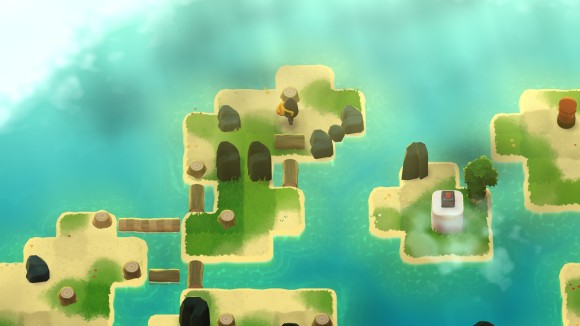
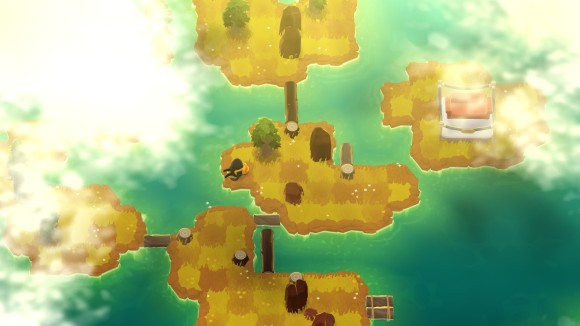
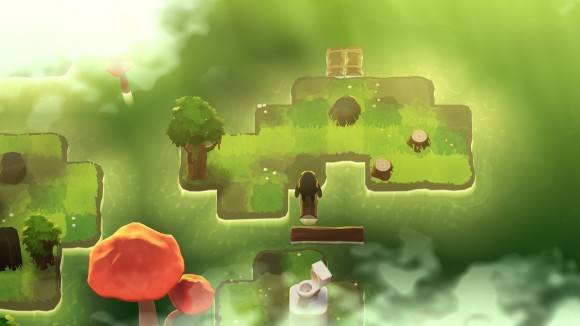
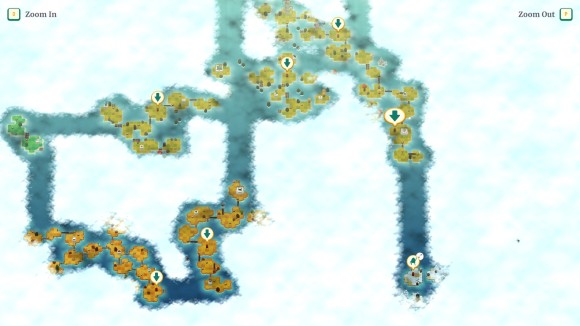
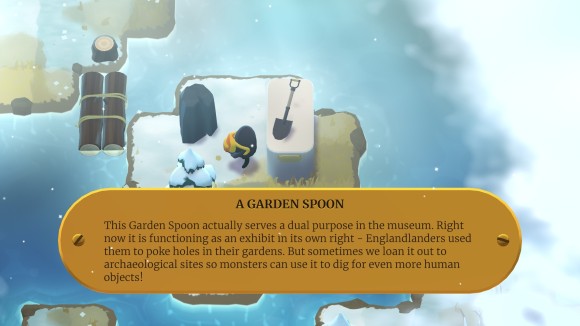
This reminds me of a Short Hike – another great game you’ve reviewed marked by a lack of modern day ubiquitous BS. I’d want more of that game but the shortness and lack of worning out was the whole point of it. A closest comparison to this meditative and I can think of are old phone games from the era when publishers didn’t get the idea of pairing match-3 gameplay with ads, loot boxes, stamina and New Player Best Value pack.
Maybe you have more of those relaxing brain cleaner games?
[…] Article supply :=> Read More […]
[…] the games that carry it off tend to make it look deceptively easy; I am reminded of last year’s A Monster’s Expedition, which took the basic concept of rolling logs around small islands and successfully spun it out […]